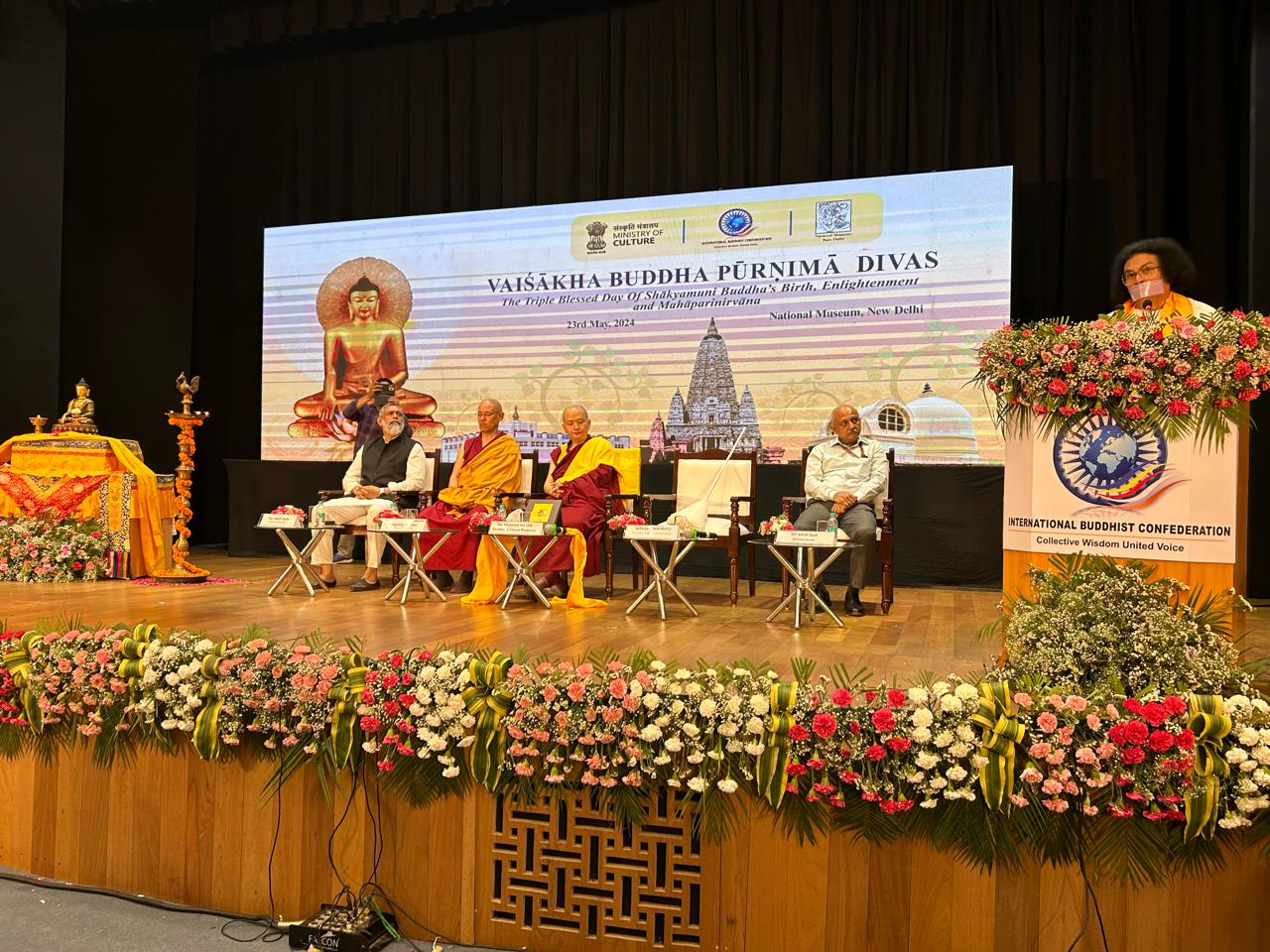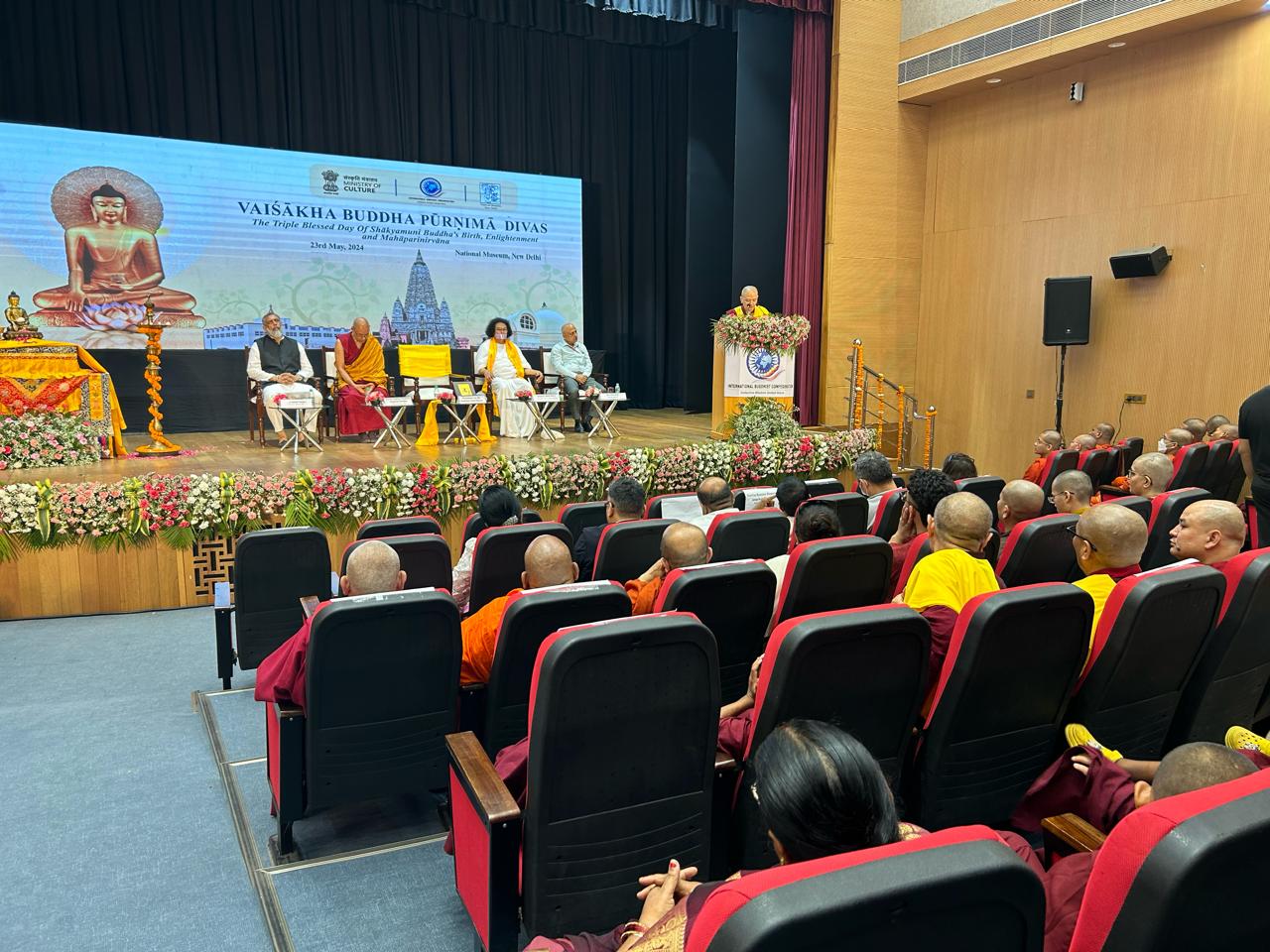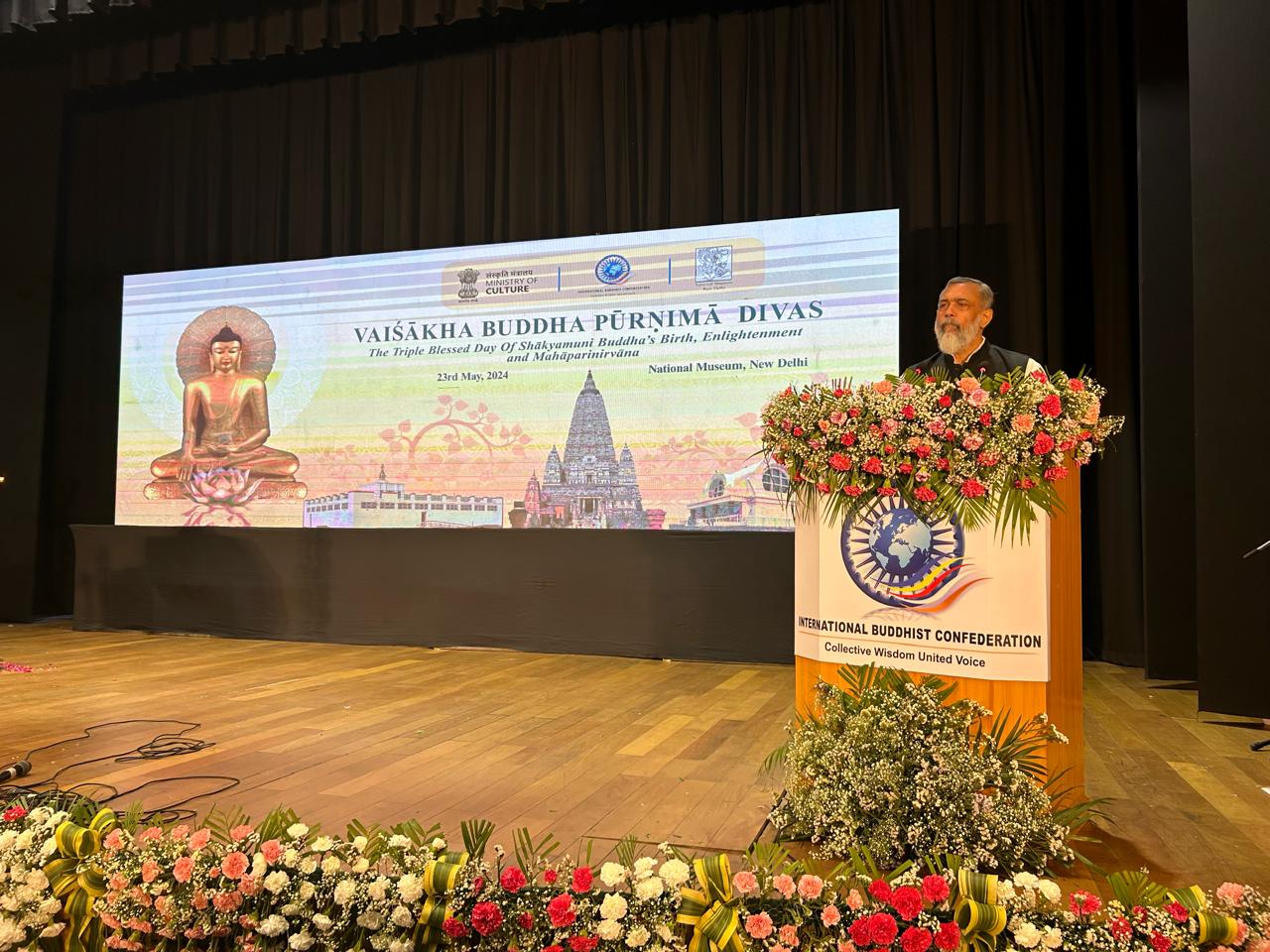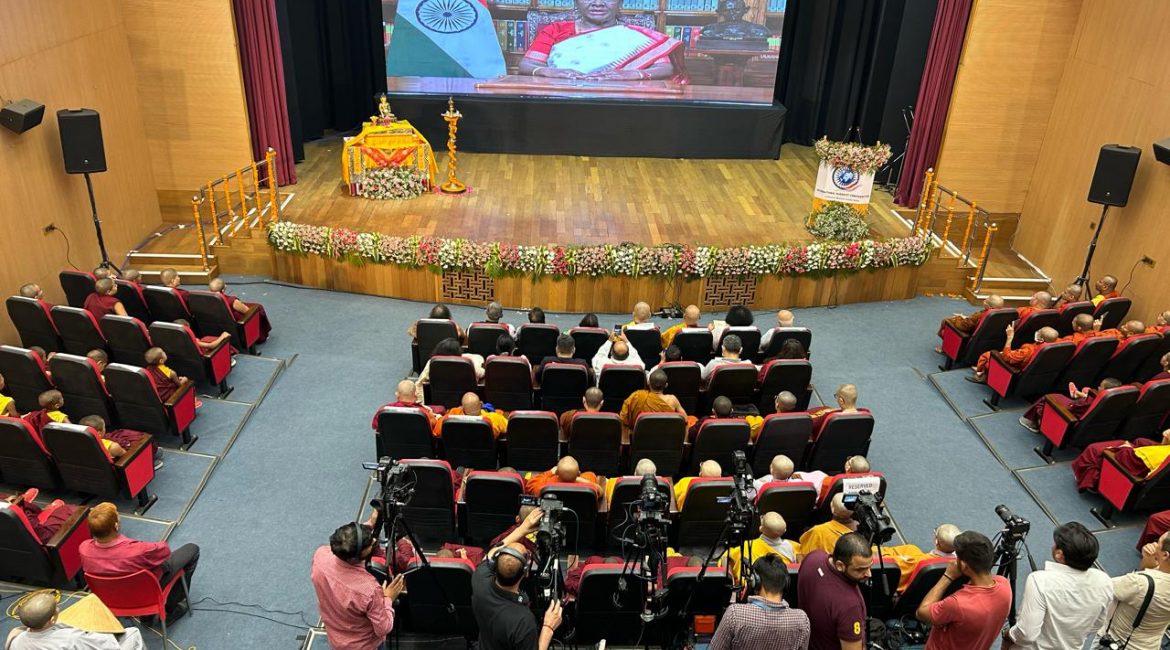By Tsering Namgyal Khortsa
Tsering Namgyal Khortsa is the author of His Holiness the 17th Karmapa Ogyen Trinley Dorjee: A Biography, Hay House (2013).
Highlighting Lord Buddha’s message of truth, non-violence, and love for humanity, Indian president Droupadi Murmu urged citizens to imbibe the Blessed One’s teachings for social harmony and nation-building.
The video recorded the message of the president to commemorate the Vaiśākha Buddha Pūrṇimā Divas at the National Museum celebrations, which were organized by International Buddhist Confederation (IBC) in collaboration with the Ministry of Culture, Government of India, and the National Museum (where the Holy Buddha Relic is enshrined).
President Murmu said: “The embodiment of compassion, Lord Buddha, has given the message of truth, non-violence, harmony and love for humanity and all living beings. Lord Buddha had said, ‘Appa Deepo Bhava,’ i.e., be a light unto yourself. His teachings of tolerance, self-awareness and good conduct inspire us to serve humanity.”

In her message, the president referred to the Buddha’s Eightfold Path that paves the way for leading a meaningful life: “Let us strengthen social harmony and take the pledge for nation-building by imbibing the ideals of Bhagwan Buddha in our lives.”
The minister of state for Culture and External Affairs, Smt. Meenakashi Lekhi, took part in offering of the flowers at the altar and the lighting of the lamp while the Mangalacharan was being recited.
Acharya Lokesh Muni, founder of the Ahimsa Vishwa Bharti, also graced the event. He spoke on the teachings of the Buddha and the inter- relationship between Jainism and Buddhism.
Observing the Triple Blessed Day with reverence and piety, (Shākyamuni Buddha’s Birth, Enlightenment and Mahāparinirvāna, all three falls on the same day) prayers were offered in the chamber of the Holy Buddha Relic in the National Museum.
The Buddha-dharma chanting and prayers in the Holy Relic Hall of the National Museum were led by His Eminence Kundeling Tatsak Rinpoche Tenzin Chokyi Gyaltsen, in the presence of monks from the Theravada, Nalanda, and Mahayana traditions. Amongst the audience were senior dignitaries, including diplomats from Buddhist countries like Myanmar and Sri Lanka.
Presenting the Dharma talk, His Eminence Kundeling Tatsak Rinpoche reflected on the life and teachings of the Buddha. He said: “We are reminded of the timeless relevance of his message. In a world often plagued by conflict, polarization, suffering, and misunderstanding, the Buddha’s teachings of compassion, non-violence, and wisdom serve as a beacon of hope and a path towards harmony.”

The Buddha’s profound insights into the nature of suffering and the path to liberation provide us with the tools to cultivate inner peace and contribute to a more just and peaceful world, he added. Rinpoche further said: “Today, India holds a special place in the heart of every Buddhist. It is the land where the Buddha attained enlightenment and shared his profound teachings.”
Rinpoche noted that it is from India’s sacred soil that the light of Buddhism spread far and wide, touching the lives of countless individuals. “Observing Buddha Purnima here in the capital of India is not only appropriate but deeply meaningful. It serves as a reminder of the enduring connection between this great land and the path of the Buddha.”
In the vote of thanks, Mr. Abhijit Halder, director-general of IBC, said that the message delivered by the Honourable President Murmu at IBC’s Vesak day celebrations was beamed live to different countries around the world, especially the Buddhist nations.
Mr. Halder appreciated the performance of the nuns from Dharamshala who held a Nalanda debate session, and also thanked Smt Vidya Shah for her classical music dedicated to the auspicious occasion.

For the first time, prayers for Unity, Harmony and World Peace were held at the Five Historical landmarks of Buddha Dhamma in Delhi, organized by IBC. A special video covering these celebrations was screened. These were the Shanti Stupa or the Peace Pagoda, in the Indraprastha Park along the outer Ring Road; the famed Ashokan Rock Edict on the hillside of East of Kailash which is among the edicts in the country on the teachings of the Buddha created by Ashoka, the Mauryan Emperor; the Ashoka Pillar at the Firoz Shah Kotla grounds, this was first erected by King Ashoka between 273 and 236 BC in the then-Topra Kalan, a Yamuna Nagar district in Haryana; the Buddha Jayanti Park along the ridge, which has a 8-feet copper statue of Lord Buddha, installed to mark the 2500th birth anniversary of Gautam Buddha, and finally at the Asoka Mission, in Mehrauli, a Buddhist temple complex.
Around 50 monks from Subharti University, Meerut, Delhi University, and the Himalayan Buddhist Cultural Association with representation from Nalanda, Theravada, and Mahayana traditions prayed at these sites to gain merit for everyone and for harmony and peace in the strife-torn world.
This year’s celebrations presented a unique opportunity to witness a lively demonstration of the famous Nalanda debate by the nuns from the Jamyang Choling Institute. This debate system originated from the ancient Nalanda monastic university in India. As Buddhist teachings and practices travelled to Tibet from India, so did the instructions on valid cognition, logic, and reasoning.
A part of the IBC team also travelled to participate in the Vaiśākha Buddha Pūrṇimā celebrations in Lumbini, Nepal at the invitation of the Lumbini Development Trust (LDT). The Indian team included 50 monks, academicians, a dance troupe, and prominent musicians of national repute. It is a matter of great honour for IBC that it is also constructing a State-of-the-Art Buddhist Complex: the India International Centre for Buddhist Culture and Heritage in Lumbini.
Headquartered in New Delhi, IBC is a Buddhist umbrella body that serves as a common platform for Buddhists worldwide.


